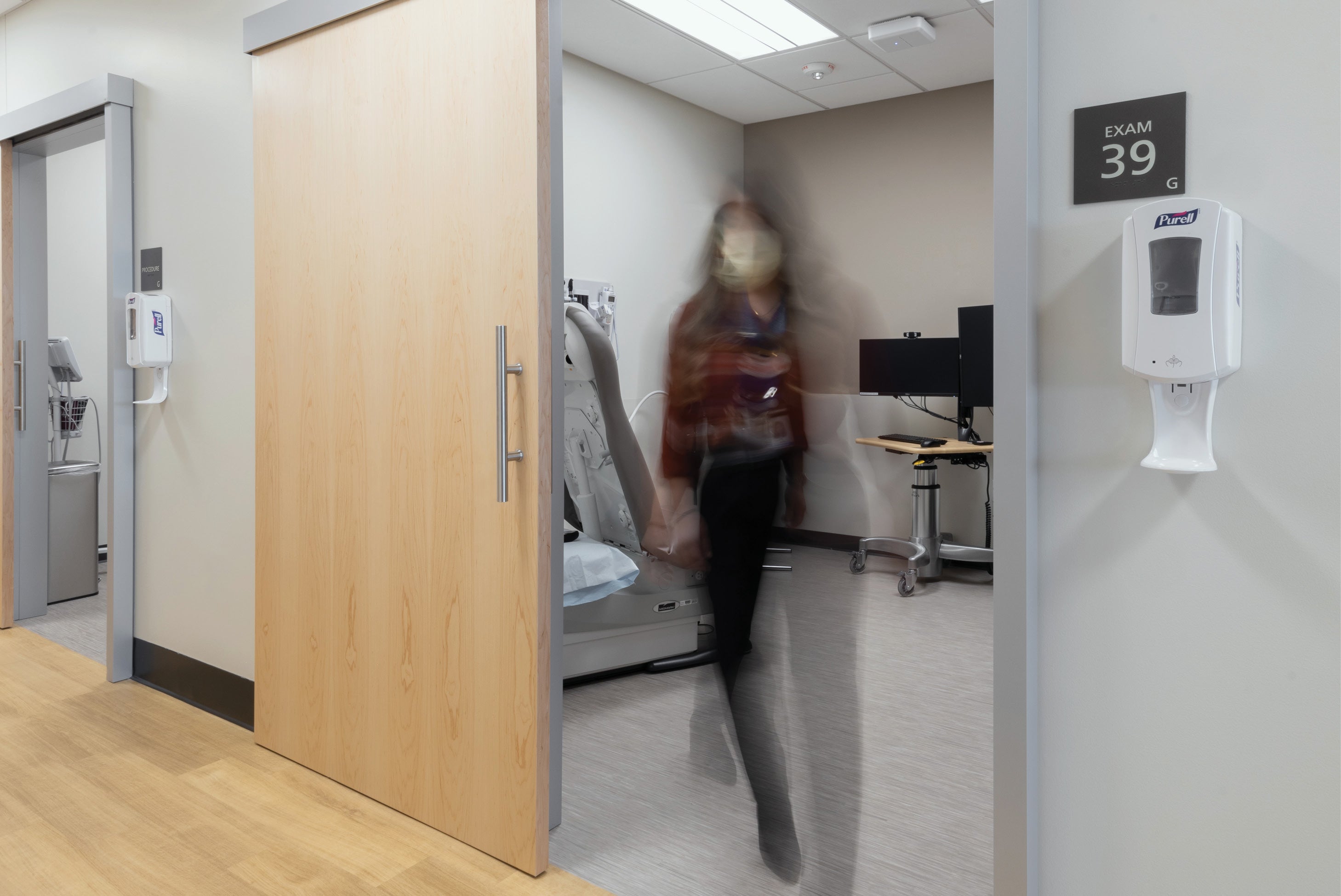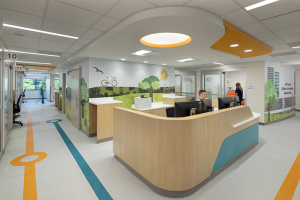Space-saving doors increase capacity

ExamSlide sliding doors remove approach clearances for effortless operation and accessibility.
Image courtesy of AD Systems
Earlier this year, Pacific Medical Centers (PacMed) moved into Providence Health’s Gately-Ryan Building in downtown Renton, Wash. The all-first-floor clinic provides a modern self-check-in system as well as expanded access to physical therapy services and a cardiovascular lab. These amenities work toward a positive patient experience by making medical center visits easier and more efficient.
Leading up to its move-in date, PacMed and its architectural team, JRJ Architects LLC, Beaverton, Ore., brainstormed strategies to maximize its useable square footage within an already established space. One of the challenges of health care renovations is working within a previously built environment that was designed for a different and specific purpose. PacMed needed to optimize the Gately-Ryan Building’s floorplan in order to achieve efficiency goals and to create a more accessible space for all patients.
One of those goals was to include as many exam rooms as possible. “Clients often want more exam rooms,” says Jason Mullavey, AIA, LEED AP BD+C, principal architect at JRJ Architects.
Optimizing the building’s square footage to provide more exam rooms allows for easier appointment scheduling, which reduces wait times, contributing to an environment that is focused on occupant comfort. The building’s design also needed to support patients even before they see their doctor. JRJ Architects decided to create open corridors to provide easy wayfinding and self-rooming.
These patient-centric priorities led the designers to look to one of the most frequently used architectural elements in the clinical space for a solution: the doors.
Doors can provide the key to optimizing a space while also supporting occupant comfort. To achieve that goal, Providence Health and JRJ Architects researched doors that meet the Americans with Disabilities Act standards for operation and would ensure the exam rooms can hold all necessary supplies while providing space for easy movement. Rather than specifying traditional swing-arc doors, the team selected commercial sliding doors throughout the building to align with PacMed’s patient-focused health care philosophy.
The installation of 52 ExamSlide sliding doors from AD Systems, Everett, Wash., fulfilled all these needs. The doors eliminate swing-arc trajectories to optimize square footage and accessibility. The sliding doors helped JRJ Architects plan for the maximum room number without having to shrink room size. From PacMed’s perspective, this helped streamline scheduling by creating more exam rooms.
“We learned that these interior sliding doors save 10 square feet per exam room because they require no swing clearance, so we standardized on their use,” says Erin Couch, director of architectural standards and design at Providence Health. This freed space for four additional exam rooms, or an extra exam room for every 11 that the architects had already planned.
The elimination of swing arcs allows the corridors to stay open and provides easy navigation, so patients can self-room without assistance. Further, because the doors do not swing, they eliminate approach clearances that can pose an obstacle for those with mobility-assistive devices. The clinic’s medical assistants have noted that the sliding doors provide easier access for patients in wheelchairs or with walkers.
Finally, without having to take swing arcs into consideration, the architects could maximize the usable space within each exam room. The reclaimed square footage helped them design rooms that could hold all the essentials while still allowing easy movement around the room — further aiding patient accessibility goals.
As an added construction bonus, because the doors were specified from a single-source supplier and required no special training to install, the team saved on construction time at the tail end of the project. PacMed’s new Renton location opened on time despite unforeseen delays.




